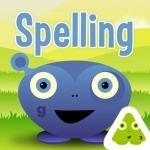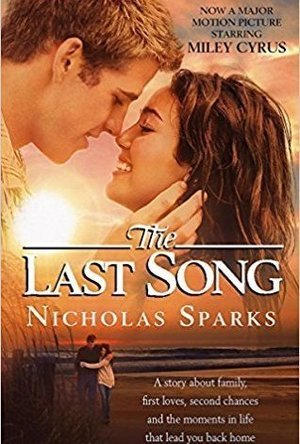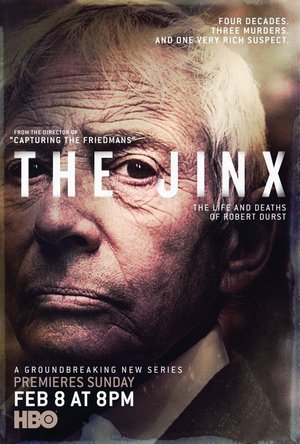
Kids Academy - preschool learning games for kids
Education and Games
App
Prepare your kid for success in preschool and beyond with our complete learning course for AGES 2 to...

Paint Sparkles Draw
Education and Games
App
~~~ Top selling education app! Over 11,000,000 downloads around the world! ~~~ ~~~ No.1 Kids...

Squeebles Spelling Test
Education and Games
App
Perfect for 5 to 11 year olds, Squeebles Spelling Test allows you to set up completely personalised...
Haley Mathiot (9 KP) rated The Last Song in Books
Apr 27, 2018
When she finds Will, the cutest volley-ball players slash aquarium volunteer in her back yard helping her protect un-hatched sea turtles from being eaten by raccoons, she judged him as not-her-type. She doesn’t expect to find a friend in a jock-rich-perfect-family boy, nor does she expect that this will be the best—most exciting, most scary, most fun, most painful—summer of her lifetime.
My Review: I’m not really sure where to start here, other than I am so utterly pleased with The Last Song, I cannot begin to find words to describe it.
Ronnie, Jonah (her brother), Her dad Steve, Will… all the characters really, were such real characters. I felt everything they felt, I laughed when they laughed, and I (nearly) cried when they cried.
I hate it when books suffer from "happy-land syndrome—" where everything works out just too perfectly that it seems silly. The Last Song seemed to work perfectly, but it didn’t have that plot-manipulated feel to it. It didn’t feel like Sparks was just trying to move the story along and causing things to line up too perfectly to be realistic—it felt like the story was writing itself, and it was perfect. The pacing didn’t feel rushed or slow. It was not a thriller, but I did find myself sitting on the edge of my seat dying to find out what happens. I read it through in two or three days (which is fast for me right now, what with school the way it is!). There are twists, there are surprises—some beautiful, some painful, but all wonderful.
The writing was contemporary. It was easy reading and it wasn’t Dostoevsky, but it wasn’t bad either. The humor was light and witty and sarcastic, sometimes laugh out loud, and more times than I can count my sister would look up from her homework and say “Haley. What is so funny?” The perspective alternated between several different characters, but it wasn’t disorientating. It was all from third person perspective, but I still felt like I could get inside the character’s head.
The end was perfect. That’s all I can really say about it because any information would totally ruin the story. All the loose ends were tied, all the questions were answered, and the ending was open to the future but closed in a wonderful conclusion. Suffice to say I grinned so wide I couldn’t see, and my cheeks are still sore.
Audio Review: Let’s just say that I almost gave up reading The Last Song when I started listening to the audio. Pepper Binkley read Ronnie’s perspective and had a high pitched voice, she read a little too fast (which is rare. Most of the time readers are way too slow), there was no differentiating between voices of characters so you couldn’t tell who was talking, and she seemed up tight and nervous. Scott Sowers read the various men’s perspectives, and he read alright. He was a little slow and his voice took some getting used to but he was otherwise ok. I did get too frustrated to get far in the audio book though. I ended up quitting and reading the paperback. I recommend reading The Last Song over listening to it.
Content: blissfully clean. There was romance between Will and Ronnie, but no sex. It wasn’t needed, either. I feel like the fact that they didn’t sleep together added to the book rather than took away from it. It was also clean of foul language. There was some mention of God and the Bible, but never did it feel like Sparks was preaching.
Recommendation: Ages 14+
Daniel Boyd (1066 KP) rated The Jinx: The Life and Deaths of Robert Durst in TV
Jun 27, 2018 (Updated Jun 27, 2018)
Please don't read on until you have seen the show in it's entirety as there are massive SPOILERS ahead. It feels weird to say that about a documentary, something that actually happened, but I promise you will not want this final revelation spoiled for you in any way.
Ok, so during the last interview, Andrew Jarecki confronts Robert Durst with two letters with the same address handwritten on each, one written by Durst years previous and the other was written by the killer and sent into a police station to notify them of the location of a body. Beverly Hills is spelt wrong in each, it is spelt BEVERLEY on each and the handwriting is exceptionally similar, especially the letter N. Durst initially appears pretty unphased by the accusation and brushes it off, until Jarecki asks him to look at a sheet that has the two versions of the address blown up and placed side by side and he asks him to tell him what one he wrote and what one he didn't and Durst is unable to tell the difference. He then begins burping uncontrollably as if trying to supress vomiting. The interview ends and Jarecki thanks Durst for his time. Durst then goes to the bathroom, unaware that he is still wearing a live microphone and says:
"There it is, you're caught.
You're right of course, but you can't imagine...
Arrest him.
I don't know what's in the house.
Oh, I want this.
What a disaster.
He was right, I was wrong.
And the burping?
I'm having difficulty understanding the question.
What the hell did I do?
Killed them all, of course."
Holy shit, these filmmakers just stumbled into getting an accidental confession from a guy who has dodged the law since 1982. Not only that, but what was recorded actually sounds like two different people having a conversation, almost like Gollum and Sméagol from Lord Of The Rings. The recording is creepy, but extremely important and provides an absolutely captivating ending to this already brilliant story. I think that what we hear in the bathroom is two sides of Durst arguing about what has just transpired. The way that each line is like a comment and then a response and the way that his tone of voice changes from line to line. I will type up my interpretation of the conversation below showing what side of Durst said what.
Good Bob: There it is, you're caught.
Bad Bob: You're right of course, but you can't imagine...
Good Bob: Arrest him.
Bad Bob: I don't know what's in the house.
Good Bob: Oh, I want this.
Bad Bob: What a disaster.
Good Bob:He was right, I was wrong.
Bad Bob: And the burping?
Good Bob: I'm having difficulty understanding the question.
What the hell did I do?
Bad Bob: Killed them all, of course.
This is obviously pure conjecture, but it's how I see the conversation going in Durst's head. Whether this is proof of disassociation or multiple personality disorder, I don't know as I'm not a psychiatrist, all that I know is that it is absolutely fascinating to hear this play out in a real world situation and makes for an absolutely brilliant piece of TV.
Hazel (1853 KP) rated The Care and Management of Lies in Books
Dec 17, 2018
British author Jacqueline Winspear states in the letter from the author at the front of the book that the idea for this novel came from a second hand copy of a book titled <i>The Woman’s Book</i> by Florence B Jack (1911) containing an inscription revealing that it was presented as a gift to a woman on her wedding day in July 1914. The story within </i>The Care and Management of Lies</i> is Winspear’s imaginings about who that woman was and what her life was like.
The book focuses primarily on four characters, the main being Kezia Brissenden née Marchant who receives the gift <i>The Woman’s Book</i> from a close friend, Dorothy “Thea”, who so happens to be the older sister of her new husband, Tom. The book was not a particularly kind gift as it emphasized Kezia’s upbringing and who, due to her father being a reverend and employer of maids and cooks, had never produced her own meal in her life nor had any experience with running a household, let alone a farm – her new home.
Whilst Kezia determinedly throws herself into her new role, showing her love for Tom through the food she learns to cook, Thea, living in London, is drifting away from their friendship. With the possibility of war on the horizon, Thea joins a pacifist movement, which is somewhat ironic as she was once involved with the suffragettes. On the other hand, once war is declared, Tom decides to enlist in the army as does neighbour, Edmund Hawkes, a man who is rather envious of Tom and his lovely wife. The reader receives two different perspectives of the terrors of war from these characters, but then also another, surprisingly, from Thea who rejects pacifism and goes out to France to help in anyway she can. This leaves Kezia at home alone with the effects the war has on Britain.
The love between Kezia and Tom is emphasized through the letters they send each other. Both are lying about their situations by trying to convince the other that they are better off than they really are. The thing that keeps them both going are Kezia’s descriptions of her fictional meals that she prepares for Tom’s dinner, describing in great detail the preparation and taste of the food.
Each chapter begins with a quote from <i>The Woman’s Book</i> (and later <i>Infantry Training</i> and <i>Field Service Pocket Book</i>) that relate to the particular events occurring in the story at that time. This is a great way of underlining the significance of that wedding present to the storyline.
The narrative quickly changes from character to character which, although helping to keep the pace of the novel, can sometimes be a little confusing. It also made it difficult to get into the story at the beginning. Sometimes it took a lot of concentration to follow the text and those with minds that easily wander may constantly find themselves suddenly reading from a different point of view without having noticed the change over.
Winspear’s grandfather was a soldier in the trenches during the Great War and so it seems likely that some of the scenes may be based on his experiences. If that is the case then it can be believed that <i>The Care and Management of Lies</i> is as accurate as can be in terms of the war and life on the front lines. Winspear also does not attempt to gloss over any of the war horrors, therefore does not create the unlikely “and they all lived happily ever after” ending that other writers of war stories have done in the past.
Those interested in war themes may be particularly interested in this book, especially as this year (2014) is the anniversary of the Great War. <i>The Care and Management of Lies</i> is a piece of literature to add to the mountain of media coverage of the commemoration of the war.

I Like Books - 37 Picture Books for Kids in 1 App
Education and Book
App
"WOW... 37 stunning picture books for kids in one app. This is a MUST have for every parent with...

Prayer Prompter - Christian Prayer App
Productivity and Lifestyle
App
A God-centered, worship-based prayer app that stores and organizes Scripture passages and prayer...

Easy Csv File Editor
Finance and Productivity
App
You could create/update Excel .csv files which could have unlimited lines and 48 columns. You could...



